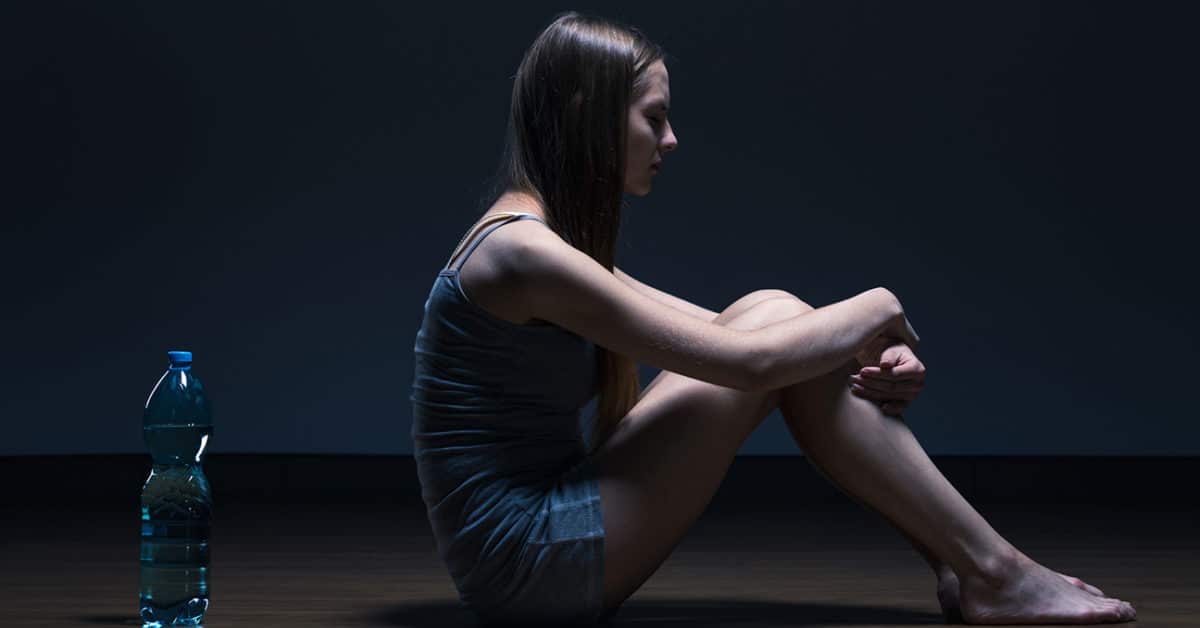Pro-ana, pro-anorexia, and pro-bulimia (or pro-mia) are terms that refer to content that is primarily found online and promotes the behavior and attitudes that are part of some eating disorders. The pro-ana sites and social media that provide this content often state or imply that this is part of a personal lifestyle choice instead of symptoms of an illness.
Why Is This Happening?
A lot of people assume that individuals who post pro-ana or pro-mia content are being vindictive on purpose. People assume that those that promote anorexia or bulimia content know they are misrepresenting eating disorder symptoms as lifestyle choices in order to encourage others to develop or continue eating disorders. However, this isn’t always true.
Many of the people who post pro-eating disorder content are struggling with eating disorders themselves. The truth is, some pro-ana and pro-mia social media profiles and sites may also contain content that recognizes the danger of eating disorders. They may even express a desire to recover.
This seems to be a contradiction, but eating disorders are very complicated mental illnesses. It’s common for an individual to have perplexing feelings about their illness and about recovering. Thus, part of the reason pro-ana and pro-mia content appeals to people with eating disorders is that it is a space where they can feel understood by others.
Why is it So Dangerous?
Although it might not always be intentional, pro-ana content is dangerous to people who might be open to developing an eating disorder, or who are already ill. Pro-ana content can make people:
- feel more negative about themselves
- bring up damaging feelings of competitiveness
- encourage people to set unhealthy goals and rules for themselves
These sites tell people that they are pursuing this harmful behavior by choice, not because they are ill. Douglas Bunnell, Ph.D. stated, “They promote a myth that eating disorders are choices, rather than a physical and mental illness.” This can cause the disorder to be more deep-rooted and harder to break out of.
Impact of Pro-Ana and Pro-Mia
These pro-ana forums are exceptionally dangerous because they combine the desire for a perfect body with a teenager’s need to fit in. The American Association of Anorexia Nervosa and Associated Disorders reported that mortality rates are:
- 4% for anorexia nervosa
- 3.9% for bulimia nervosa
- 5.2% for eating disorders
Unlike health and wellness websites that encourage healthy weights, moderate exercise, and acknowledged nutrition and diets, many pro-eating disorder sites recommend intense methods like vomiting and fasting.
The emphasis of pro-ana videos is on achieving extremely thin or skeletal appearances. Teens exposed to pro-eating disorder sites have higher levels of body dissatisfaction than those who weren’t exposed to those sites. They also show a decreased quality of life and longer durations of eating disorders.
Eating disorders involve many factors or causes. Particularly anorexia nervosa, which typically begins in adolescence.
Anorexia nervosa can be a devastating illness that includes the risk of suicide. Many factors appear to influence the development and continuation of pro-eating disorders among female teens.
Science even shows that teenagers with eating disorders have:
- a distorted image of their bodies
- the wrong perception of their image and thereof
- dissatisfaction with their physical appearance as compared to celebrities
“Thinspiration”
In a study cited by the National Institutes of Health, a review of pro-eating disorder websites found that 85% of them included “thinspiration.” Thinspiration sites include images or prose meant to inspire weight loss.
Well-known fashion models were shown most frequently (66% of sites included at least one model). This was followed by celebrities (57%), real people (44%), and athletes 12%.
Another type of thinspiration includes showing “reverse triggers” or pictures of overweight people or food. Others included cartoons, videos, and music lyrics that encourage self-harm. Others even offer “Tips and Techniques” that could promote eating disorder behaviors.
What Are Eating Disorders?
As mentioned, eating disorders are serious mental illnesses that can affect anyone. It doesn’t matter that person’s age, gender, ethnicity, or background. People with eating disorders tend to use disordered eating as a way to cope with problematic feelings and situations.
Examples of disordered eating behavior include:
- Limiting the amount of food eaten
- Eating excessive amounts of food at one time
- Getting rid of food eaten through unhealthy means such as vomiting, laxatives, fasting, or overexercising
- A combination of these behaviors
It’s important to realize that eating disorders are not actually about the food. It’s about feelings. The way the person treats food might be a way to make themselves feel more able to cope or feel more in control. Often, the person with an eating disorder is not even aware of the purpose that his or her behavior is serving.
Types of Eating Disorders
In order for healthcare professionals to provide the right method of eating disorder treatment, they need to properly diagnose the eating disorder. It is possible for someone to move between diagnoses if he or she experiences a change in symptoms. Also, there is a lot of overlap of symptoms between different eating disorders.
Some common eating disorders include:
Orthorexia
Orthorexia refers to an unhealthy obsession with eating “pure” food. Food that’s considered pure or impure can vary among people. But that doesn’t mean that anyone who tries to stick to a healthy eating plan is struggling with orthorexia.
Similar to other eating disorders, the eating behavior of someone that suffers from orthorexia is used to cope with negative thoughts and feelings or to feel in control. Using food this way can make a person feel extremely anxious or guilty if he or she eats something that the person considers unhealthy.
Pica
Pica is a feeding disorder in which a person eats non-food substances that don’t have nutritional value such as:
- Paper
- Soap
- Paint
- Chalk
- Ice
People with pica don’t quit eating regular food, so they might still be getting their nutrition. Still, some non-food items they eat can be dangerous.
This behavior must be present for one month and not be part of cultural practice. Although pica can affect people of all ages and genders, it is more likely to first appear in children. It can also occur with other illnesses, including other eating disorders.
Rumination Disorder
Rumination disorder involves bringing up food that might be partially digested repetitively and habitually. Vomiting in rumination disorder is not the same as the kind of illness you get with the flu and it’s not associated with nausea or disgust.
In fact, the person won’t look like they are sick or have involuntary vomiting. The individual may simply re-chew and re-swallow the food or just spit it out. People with this disorder feel like they have no control over such behavior.
Anorexia Nervosa
An individual with anorexia nervosa may develop rules around what he or she believes he or she cannot eat. Also, an individual with anorexia nervosa has rules about when and where he or she can eat despite possibly already being at a low weight.
In addition to limiting how much they eat, people that suffer from anorexia nervosa will often exercise, make themselves vomit, or misuse laxatives to eliminate food that they have eaten. They may also binge eat and then purge.
Anorexia is a serious mental illness. It can cause extreme physical problems due to the effects starvation has on the body such as:
- Loss of muscle strength
- Loss of bone strength
- Lowered sex drive
Because of how dangerous and unhealthy exhibiting symptoms and behaviors that are related to anorexia nervosa can be, pro-ana sites are harmful to society.
Sometimes, a person’s symptoms may not match everything a doctor checks for a diagnosis of anorexia nervosa. According to the symptoms, that person might be diagnosed with atypical anorexia or another form of other specified feeding or eating disorder (OSFED).
OSFED
If a person’s symptoms don’t fit the expected symptoms of anorexia, bulimia, and binge eating disorder (BED), they may be diagnosed with “other specified feeding or eating disorder” (OSFED). OSFED accounts for the highest percentage of eating disorders.
Binge Eating Disorder (BED)
Evidence shows that binge eating disorders are more common than other eating disorders. Individuals with BED eat large amounts of food over a short period of time. Although people that suffer from bulimia binge eat, the difference between people that simply binge eat and people that suffer from bulimia is that people that suffer from binge eating don’t usually try to later get rid of the food that they binge ate through vomiting. People who binge eat though may fast between binges.
People who suffer from binge eating disorders are not just “overindulging.” Binges often include more food than someone would ordinarily want to eat and an inability to stop eating even if the person wants to.
Bulimia Nervosa
People with bulimia nervosa (or bulimia) get caught in a cycle of eating large amounts of food (bingeing) and then trying to later make up for it by:
- vomiting
- using laxatives or diuretics
- fasting
- excessive exercising
Periods of binge eating are usually very distressing to a person who suffers from bulimia. This is because a person with bulimia may feel trapped in the cycle of bingeing and purging. Also, people with bulimia place a lot of importance on their shape and weight. They often see themselves as much larger than they are.
Signs of bulimia may differ, but a person doesn’t have to exhibit all of them to be suffering. It’s not always easy to recognize that someone has an eating disorder. Keep in mind that eating disorders are mental illnesses.
Suffering from bulimia can be harmful to a person’s mental and physical health. That’s why pro-mia content online can be so dangerous.
How Can You Combat the Pro-Eating Disorder Mentality?
If you are taking part in eating disordered behavior, or even feel the urge to take part in eating disordered behavior, there are positive spaces you should visit online for help. Such positive online spaces highlight looking after your wellbeing and encourage a healthy relationship with food.
Some do’s and don’ts for overcoming an eating disorder mentally are listed below:
Do’s and Don’ts for Overcoming an Eating Disorder
- Don’t be hard on yourself. Being critical of yourself won’t help motivate recovery. In fact, it may actually increase feelings of shame, making a bad situation worse. Try to stay positive.
- Don’t blame your family. It used to be believed that parents were the main cause of the development of eating disorders, but the latest research shows that there are many complex causes. If your family hasn’t been supportive, they probably don’t know how. Talk to a treatment provider about how to cope with your relationships and move on.
- Don’t expect that you can overcome an eating disorder on your own. Research has shown that people with eating disorders have a higher likelihood of recovery with the help of a specialized treatment team.
- Don’t put other people’s needs above your own. Although you want to help, their stories may be emotionally taxing or triggering for you. Take care of yourself first, then decide how much you are able to help others.
- Don’t believe you aren’t worth it. Treatment and recovery can be expensive and take a lot of time. Don’t get caught up in believing that you aren’t worth the financial commitment.
Additional Dos and Don’ts for Overcoming an Eating Disorder
- Don’t stop hoping. An eating disorder is serious and can be fatal. However, they are treatable and you can recover completely. Therefore, never lose hope of recovery.
- Don’t be afraid to ask for help. Hopefully, you have a treatment team that you can call on for support and help. But, don’t forget about family and friends. If you give them a chance, they may be a source of support.
- Don’t keep it a secret. Keeping secrets can cause feelings of shame and keep you from asking for help when you need it. When you share, choose people who have earned your trust to share with.
- Don’t be impatient. A full recovery may take years and it isn’t easy. Also, you may slip and relapse. But have faith in the recovery process and keep in touch with your treatment team.
- DO listen to your team. Your treatment team should be made up of professionals with years of training and experience. Listen to them when they make recommendations.
- Don’t avoid every situation that makes you anxious. Full recovery includes facing situations that you have been trying to avoid. Work with your team to develop a plan.
Find Your Treatment Team at Montare
You can find your professional, experienced treatment team at Montare Behavioral Health. We can offer you comprehensive and compassionate strategies to help you recover from your struggle with an eating disorder and keep you on track for lifelong recovery.
Eating disorders are serious. Thus, if you suffer from one, you deserve the best treatment team available. Luckily, you can find that here at Montare. Contact us today.
References:
https://www.beateatingdisorders.org.uk/get-information-and-support/about-eating-disorders/
https://www.ncbi.nlm.nih.gov/pmc/articles/PMC2901299/







